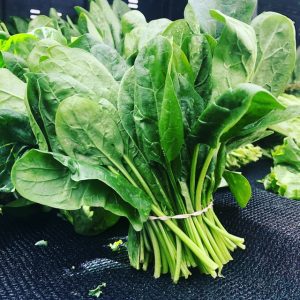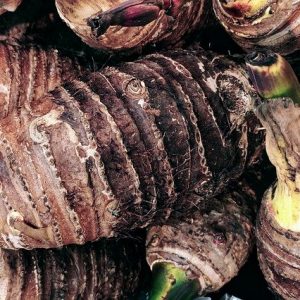urrent Facts
Amaranth is the commonly used name for any one of the 60 different species found in the Amaranthaceae family. The name comes from the Greek amarantos, “one that does not wither,” or “the never-fading”, alluding to the brilliant bushy flowers that retain color long after harvest. Often regarded as a common weed, one green variety is named “pigweed”, the plants are commercially cultivated for their edible seeds, leafy greens and decorative blooms. The plants are consumed as a green vegetable primarily in Asian cultures, where they are known as callaloo in the West Indies, chawli leaves in India, and cow pea leaves in Africa. Red Amaranth leaves are more often used for their ornamental purposes or even to make red dye, such as the “Love Lies Bleeding” varietal.
Nutritional Value
Amaranth leaves are nutritionally similar to beets, Swiss chard and spinach, but are genetically closer to their wild ancestors and offer a far superior source of carotene, iron, calcium, protein, vitamin C and trace elements.
Applications
Amaranth greens may be eaten raw or cooked. The younger leaves are mild and tender while the more mature plants are slightly fibrous and develop a bitter flavor. Select Amaranth leaves that have small thin stems and lack any flower buds. Although edible, the blossoms usually indicate that the leaves are past their prime for eating. Add the greens to salads and soups or briefly sauté with oil similarly to spinach. Complimentary flavors include bacon, ham, poultry, anchovies, garlic, onion, sesame seeds, soy sauce, lemon, mushrooms, oregano, dill, cumin, goat cheese, parmesan, ricotta, mustard, walnuts and curries.
Ethnic/Cultural Info
As a grain, Amaranth has a long and colorful history throughout Mexico and South America. It was a major food source for the Ancient Aztecs and was also used in their ceremonial religious practices. The grains were combined with honey and formed into the likeness of a deity, worshiped and then eaten in a communal feast. When the Spanish conquistadors attempted to convert the native populations to Christianity in the sixteenth century, they forbade such “heathen” festivals surrounding Amaranth and punished those in possession of it.
Geography/History
Amaranth is native to the Americas, specifically Peru where it was probably domesticated somewhere between 6,000 and 8,000 years ago. It has since spread worldwide to climates ranging from temperate to tropical. Amaranth greens are more readily eaten as a vegetable, as opposed to being cultivated as a grain, in Southeast Asia, Africa and India. It can grow in most soil types and once established can even thrive in drought stricken countries such as in sub-Sahara Africa.
wikipedia
photo credit
specialtyproduce.com







Reviews
There are no reviews yet.